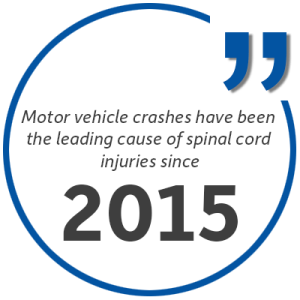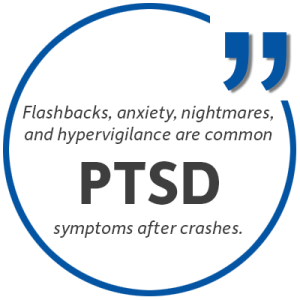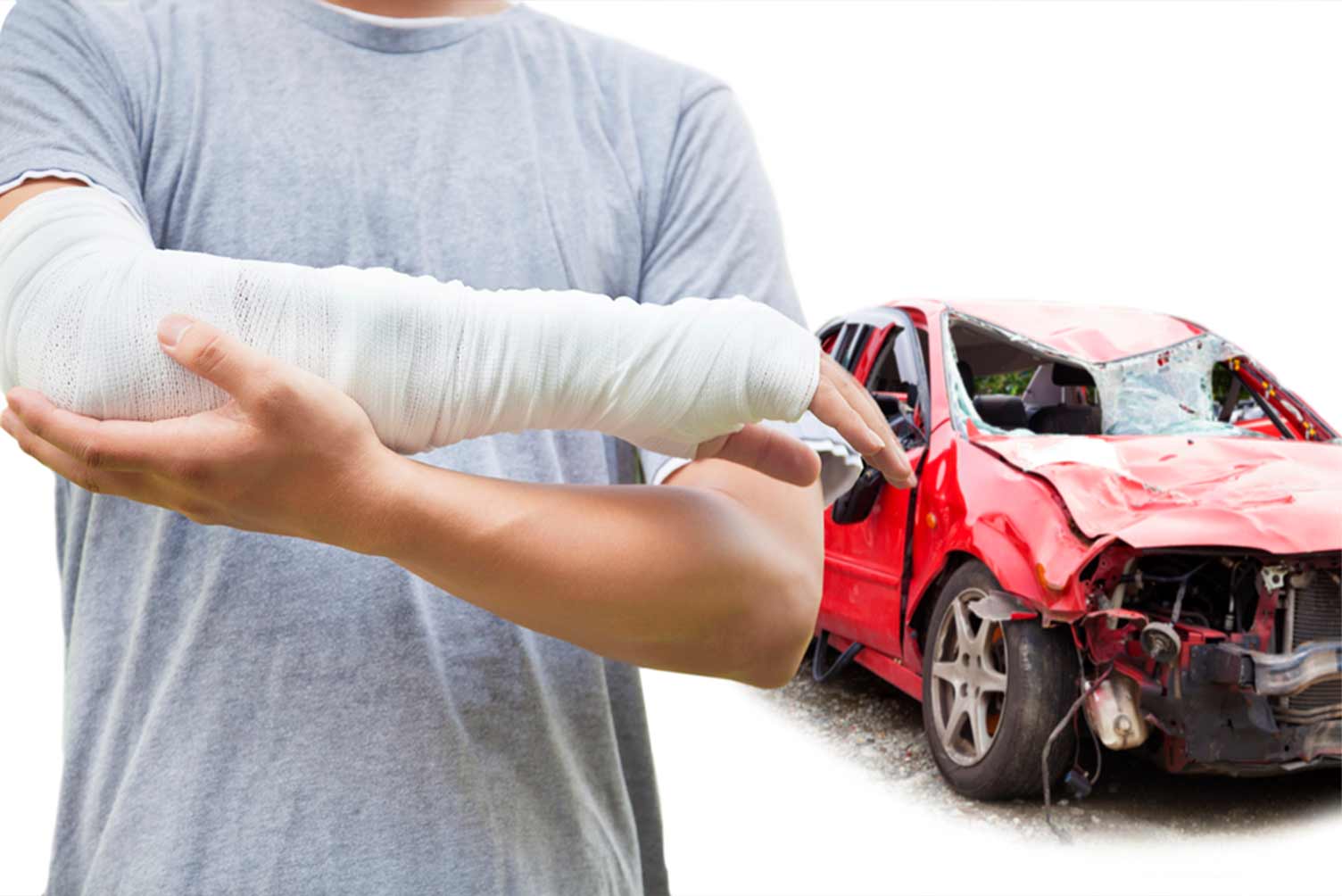According to the NSC (National Safety Council), 4,800,000 people were injured in car accidents in 2020 seriously enough to need immediate medical attention. In Indiana, that figure was 38,913. The top 5 worst car crash injuries are more common than you think.
All injuries resulting from car crashes are traumatic if you are the one involved, but some common car accident injuries are particularly severe and even life-threatening.
Severe injuries may permanently affect your ability to work, attend school, or even function without pain on a daily basis. The actions of a negligent driver could forever alter the trajectory of the rest of your life. This is why it is so important to seek the advice of an experienced car crash injury lawyer. They have the skills and knowledge necessary to effectively negotiate with reluctant insurance companies to make sure that you are fairly and adequately compensated for your injuries.
Unfortunately, expenses add up quickly when you or a loved one is dealing with injuries that are difficult or impossible to fully recover from.
What Are the Most Severe Car Accident Injuries?
Below are some of the worst car crash injuries an accident victim may experience after a car accident:
1. Traumatic Brain Injuries (TBIs)

Traumatic brain injuries could occur as a result of blunt force trauma when your head impacts against the steering wheel, dashboard, or side window. In a car accident, projectiles and car parts can become high-speed missiles that strike your unprotected head. Penetrating head injuries are also possible when glass or metal fragments actually penetrate the skull and directly damage brain tissue.
Although effects may differ depending on the exact brain injury, some general impairments caused by traumatic brain injury include:
Cognitive deficits: Trouble with memory, concentration, reasoning, and problem-solving
Sensory processing dysfunction: Difficulty interpreting visual, auditory, and tactile stimuli
Speech and language problems: Slurred speech, difficulty finding words, inability to understand others
Behavioral changes: Irritability, impulsiveness, aggression, acting inappropriately
Mental health issues: Depression, anxiety, personality changes, suicidal thoughts
Physical effects: Headaches, seizures, loss of coordination, weakness or paralysis on one side of the body
A head injury is an immediate trip to the emergency room. In especially severe cases, a patient may be left in a coma or persistent vegetative state. Even those who regain consciousness after the car accident injury often face profound, permanent disability. Recovery from moderate to severe traumatic brain injury can take weeks, months, or years, or may never be complete.
According to the Brain Injury Association of America, “Those who sustain brain injuries are many times more likely to suffer from any variety of conditions or neurological disorders, ranging from spasticity to Alzheimer’s Disease.”
2. Spinal Cord Injuries

Motor vehicle crashes have been the leading cause of spinal cord injuries since 2015. The spinal cord, the column of nerves within the vertebral bones, controls sensation, motor function, reflexes, and organ function below the level of the injury, so any damage can be catastrophic to the accident victim and require immediate medical attention.
Spinal cord injuries can cause:
- Paralysis in the legs or arms, or complete quadriplegia
- Loss of control of the bladder and bowel
- Loss of sexual function
- Inability to regulate body temperature
- Loss of sensation to touch, pressure, hot/cold
- Difficulty breathing due to chest injuries and paralysis of chest muscles
- Chronic pain at the injury site
The higher on the spinal column the injury occurs, the more function is compromised. Even with physical therapy and assistive devices, most patients of spinal cord tears suffer lifelong disability and reliance on caregiver support for routine tasks after sustaining these most severe injuries.
3. Internal Organ Damage
Blunt force and penetrating trauma to the torso can tear, rupture, or lacerate internal organs. Dashboards and steering columns can inflict massive abdominal trauma in a frontal collision. Objects propelled through windows can puncture internal organs. Internal bleeding may not be immediately apparent after a car accident and may lead to even death.
Some potentially fatal internal injuries include:
- Lung punctures from misplaced bone fragments leading to collapsed lungs
- Ruptured spleen causing severe internal bleeding
- Liver lacerations resulting in hemorrhage
- Kidney damage inducing acute renal failure
- Penetrating injuries of the bowel allowing waste to contaminate the abdominal cavity
- Torn aorta causing blood to flood chest cavity
- Heart damage like bruised heart tissue or arterial dissections
Surgery is often urgently required for the worst injuries to stop internal bleeding due to internal organ damage. Left untreated without medical attention, these worst car accident injuries can quickly lead to sepsis, organ failure, and death. Consulting car accident attorneys after these most severe injuries should be your first step on the road to recovery.
4. Back and Neck Injuries
The sudden back-and-forth whipping motion of a crash commonly causes soft tissue injuries, back injuries, and neck injuries to the delicate bones, disks, muscles, and nerves of the spinal column of an accident victim:
- Whiplash: Stretching of soft tissues in the neck, causing lingering pain and stiffness
- Herniated discs: Ruptured vertebral disks pressing on spinal nerves, resulting in numbness, weakness, and sciatica
- Compression fractures: Vertebrae crack under pressure, leading to a spinal cord injury
- Cervical dislocation: Vertebrae separate partially or completely, destabilizing the spine
- Spinal contusions: Bruised spine weakens structural integrity and risks further injury to the spinal cord
These traumatic spinal injuries often necessitate surgery, braces, therapy, and chronic pain management. Even after extensive treatment by a medical professional, many patients are left with permanent impairments and possibly even death due to this car accident injury.
5. Burn Injuries
In a high-speed motor vehicle accident, crashed vehicles frequently catch fire and burn. While superficial first and second-degree burns heal properly, third-degree burns and fourth-degree burns can be life-threatening and pose lifelong challenges.
These severe burns destroy both layers of skin, subcutaneous fat, and underlying nerves/tissue:
- Massive scarring and permanent disfigurement
- Reduced mobility as skin tightens during healing
- Nerve damage causing chronic neuropathic pain
- Loss of sensation in burned areas
- Increased risk of infection and blood pressure abnormalities
- Pneumonia due to lung damage from inhaling hot gases
- Need for extensive skin grafts and reconstructive surgery
- Anxiety, depression, and post-traumatic stress from trauma
Burn patients require months of specialized medical care and rehabilitation as well as ongoing revision surgeries. Support is also needed to cope with psychological effects.
Additional Traumatizing Injuries After a Car Accident
In addition to traumatic brain injury, neck injuries, and spinal cord injuries, several other common car accident injuries can significantly impact the lives of victims and their families.
Facial Injuries
Faces routinely collide with steering wheels, dashboards, windows, and other solid interior surfaces during crashes. Facial injuries affect the facial bones, orbits, jaws, noses, mouths, and teeth can be broken, shattered, or knocked completely out of alignment.
Common devastating facial injuries include:
- Broken bones in the eye sockets, cheeks, jaw, or skull
- Blown-out sinuses and nasal passages
- Knocked out or broken teeth and dental work
- Severed facial nerves
- Fractured and displaced jaws
- Cut, torn, and ruptured facial muscles
- Deep facial lacerations
Reconstructive surgery is typically required. Oral surgery may be needed for dental damage. Eyesight, appearance, and facial animation may remain compromised after a lengthy recovery.
Amputations
Limbs can be severed in a car accident when occupants are partially ejected from vehicles or when metal is twisted and compressed with immense force during collisions.
These traumatic amputations leave victims profoundly disabled:
- Loss of hands removes the ability to perform intricate tasks integral to daily living and many jobs.
- Missing feet necessitate prosthetics to regain walking mobility.
- Leg amputations require extensive strength training and practice using artificial limbs to stand and move about again.
- Arm amputations make it challenging to lift, carry, and manipulate objects.
- Phantom limb pain, unexplained sensations from nerves severed in amputated area, can be challenging to manage.
- Depression and trauma responses frequently accompany major amputations.
- Extensive occupational and physical therapy is needed to regain functioning.
Though prosthetics and mobility aids help amputees adapt, these severe injuries incur substantial costs and require massive adjustment.
General Broken Bones
Car accidents can result in a variety of broken bone injuries due to the forceful impact and collision dynamics.
The most common broken bone injuries sustained in a car accident include:
Broken ribs: Impact with the steering wheel, dashboard, or seatbelt can cause broken ribs, leading to sharp pain and difficulty breathing.
Arm fractures: The arms may collide with the car’s interior during the car accident, resulting in fractures in the humerus (upper arm bone), radius, or ulna (forearm bones).
Leg fractures: Impact with the dashboard, door, or other vehicle components can cause fractures in the femur (thigh bone), tibia, fibula (lower leg bones), or patella (kneecap).
Broken pelvis: The pelvis may sustain fractures from the force of the impact, leading to severe pain and difficulty walking or standing.
Spinal fractures: The vertebrae of the spine can fracture due to the sudden jolt and compression forces experienced during a car accident, potentially resulting in permanent paralysis or loss of mobility.
These injuries after automobile accidents can range from minor fractures requiring immobilization and rest to more severe fractures necessitating surgical intervention and rehabilitation. Ongoing follow-up care and therapy may be necessary to restore function and mobility to the affected limbs and body parts.
Knee Injuries
The potential knee injuries sustained to the human body in car accidents include:
- Knee fractures: The knee joint may absorb significant impact during a collision, leading to broken bones in the patella (kneecap) or other bones in the knee region.
- Ligament tears: The ligaments surrounding the knee joint, such as the anterior cruciate ligament (ACL) or medial collateral ligament (MCL), can tear due to sudden twisting or hyperextension of the knee during a car accident.
- Meniscus tears: The meniscus, a cartilage pad that cushions the knee joint, can tear from the force of impact or sudden changes in direction during the collision.
- Tendon injuries: The tendons connecting the muscles to the bones in the knee, such as the quadriceps or patellar tendons, can become strained, torn, or ruptured during a car accident.
These knee injuries can vary in severity, from minor strains and sprains to more severe fractures and ligament tears requiring surgical intervention and rehabilitation. Symptoms of knee injuries may include pain, swelling, instability, difficulty bearing weight, and limited range of motion. Depending on the severity of the knee injury and its impact on daily activities and quality of life, individuals may require physical therapy, bracing, or surgical repair to restore function and mobility to the knee joint.
The Worst Car Crash Injuries to the Arms and Legs
The sudden impact of a collision can cause severe trauma to occupants’ limbs. Arms and legs are especially vulnerable since they are not protected by airbags.
Common arm and leg car accident injuries include:
- Fractures: Blunt force trauma can lead to broken bones in the arms and legs. Different types like hairline fractures, compound fractures with protruding bone, and comminuted fractures with bone shards are possible.
- Sprains & strains: Violent twisting or overextension of joints and tendons causes painful sprains and strains. These affect ankles, knees, elbows, and wrists most often.
- Nerve damage: Trauma from impact can damage nerves in the arms and legs, causing numbness, weakness, and loss of motor control. This nerve damage can be temporary or permanent.
- Compartment syndrome: Internal bleeding and swelling compress nerves and blood flow, causing severe limb pain and muscle death if not treated urgently.
- Crush injuries: Massive compressing forces can rupture muscles in the arms or thighs and damage surrounding tissue.
- Dislocations: Impact can knock joints out of proper alignment, partially or fully disconnecting the components. This causes immobility and intense pain.
Psychological Trauma

Experiencing a vehicle collision can inflict more than just physical car crash injuries.
Car accidents also often cause significant psychological trauma with lasting mental health effects and emotional scars that can even be life-threatening:

- Post-Traumatic Stress Disorder: Flashbacks, anxiety, nightmares, and hypervigilance are common PTSD symptoms after crashes. Avoiding cars or driving can develop.
- Depression: Car accident victims may experience profound sadness, feelings of hopelessness, changes in appetite, and sleep habits indicative of depression.
- Phobias: Some develop driving phobia, finding it terrifying to ride in cars. Others fear highway travel or driving through intersections where car accidents occurred.
- Suicidal thoughts: The trauma and perceived loss of quality of life after a car accident can lead some victims to contemplate ending their lives.
- Personality changes: Outgoing people may become withdrawn and irritable after car accidents. Responsible people may act more recklessly.
- Loss of concentration: Car accidents can impact focus, attention, and short-term memory, impairing daily functioning.
- Relationship conflicts: Mood changes, pain, and disability strain interpersonal relationships, causing isolation and loneliness.
Counseling, medication, support groups, relaxation practices, and lifestyle changes can help manage psychological damage from a car accident. However, effects may persist long after physical recovery.
Get Maximum Compensation with Crossen Law Firm
Injuries sustained in a car accident can lead to various types of damages that a victim may be awarded. These damages typically include compensation for medical expenses, such as hospital bills, medications, and rehabilitation costs for soft tissue injuries, sprains, etc.. Additionally, victims may receive compensation for lost wages due to time off work, as well as for the pain and suffering endured as a result of the accident and injuries. Any common car crash injuries will mean costly medical bills after a car accident. Filing injury claims and negotiating fair compensation from insurance companies can be an immensely complex and confusing process, especially when you are coping with severe pain and disability. You need an auto accident lawyer on your side to recover damages for your physical pain and medical treatment after an auto accident.
At Crossen Law Firm, we have the skills and knowledge to handle the insurance company effectively and obtain maximum compensation through settlements or jury awards for our injured clients after motor vehicle accidents.
Get started on your case today by scheduling a free consultation to discuss your car accident injuries and options for recovery. Our experienced car accident attorneys will fight to help you move forward and receive the compensation you need and rightfully deserve.

 317-401-8626
317-401-8626 
.jpg)